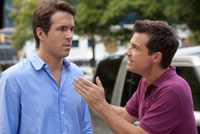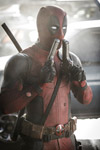Ryan Reynolds Criminal
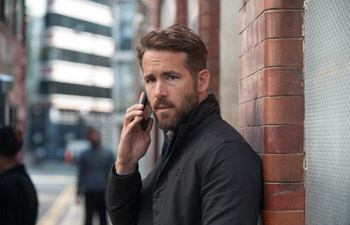
Ryan Reynolds Criminal
Cast: Kevin Costner, Tommy Lee Jones, Gary Oldman, Ryan Reynolds, Gal Galdot, Alice Eve, Michael Pitt
Director: Ariel Vromen
Rated: MA15+
Running Time: 113 minutes
Synopsis: The story of the right man in the wrong body. In a last-ditch effort to stop a diabolical plot, a dead CIA operative's memories, secrets, and skills are implanted into an unpredictable and dangerous death-row inmate in hopes the he will complete the operative's mission.
Criminal
Release Date: May 19th, 2016
About The Production
'Memory is the scribe of the soul." - Aristotle
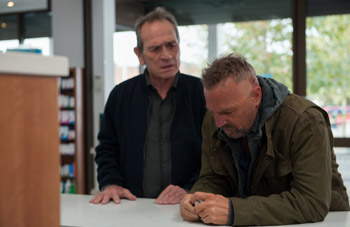 What happens when the CIA's only hope to stop a terrorist threat to the nuclear arsenal lies in the dark, unpredictable recesses of a criminal's damaged mind? Directed by Ariel Vroman and featuring a star-studded cast led by Kevin Costner, Gal Gadot, Tommy Lee Jones and Gary Oldman, Criminal is a fresh, provocative spin on the espionage action-thriller that probes the secret world of memory and identity, as it propels an unwitting death row killer into the consciousness of a dedicated CIA agent in a ferocious race against time.
What happens when the CIA's only hope to stop a terrorist threat to the nuclear arsenal lies in the dark, unpredictable recesses of a criminal's damaged mind? Directed by Ariel Vroman and featuring a star-studded cast led by Kevin Costner, Gal Gadot, Tommy Lee Jones and Gary Oldman, Criminal is a fresh, provocative spin on the espionage action-thriller that probes the secret world of memory and identity, as it propels an unwitting death row killer into the consciousness of a dedicated CIA agent in a ferocious race against time.
The propulsive story begins when CIA agent Bill Pope is tragically killed in the middle of an urgent, top-secret mission. He's been tracking the brilliant hacker known as "The Dutchman" (Michael Pitt), who, while navigating the lawless Dark Web, has uncovered the means to take charge of the entire weaponry of the U.S. military's Central Command.
With Pope's death, every vital piece of information he's discovered about The Dutchman and his whereabouts is wiped out forever. Dead men tell no tales. Or do they? As Kevin Costner says: 'It used to be dead men went to the grave with their secrets but as we unlock the inner workings of the brain, and as science progresses, we know it may soon be possible to transfer the memories of one person to another – and the implications are vast."
That is why the CIA's relentless London chief, Quaker Wells (Oldman), embarks on an unprecedented medical intervention – an experimental surgery that might implant Pope's DNA directly into the synapses of another man's brain. He recruits the maverick neurosurgeon, Dr. Franks (Tommy Lee Jones), who in turn finds the one person who might be able to absorb Pope's memories: a treacherously unhinged death-row convict named Jerico Stewart (Costner), whose childhood brain damage makes him unpredictable yet an ideal candidate. Left without empathy or emotions, Jerico might provide a blank slate for taking on Pope's memories.
Deluged by memories he doesn't know what to do with, Jerico is drawn like a magnet to Pope's old house and to his widow Jill (Gadot) and their beloved child – even as the CIA begins to trace his moves. When the ruthless anarchist Xavier Heimdahl (Jordi Molla), intent on controlling the U.S. nuclear arsenal to advance his own agenda, kidnaps Pope's family to get to The Dutchman first, Jerico is helpless against the overpowering urge to save them.
But time is of the essence, for Jerico has learned from Dr. Franks that the effects of the brain surgery are only temporary. Soon, his sense of Pope's innermost thoughts will begin to fade and Jerico will lose the memories that now mean everything to the future of the civilized world and to Jerico himself.
Criminal Or CIA Agent?
Director Ariel Vromen – who came to the fore with the chilling crime story The Iceman – saw in Criminal's action-packed story a chance to create a hybrid: to fuse elements of an unnerving psychological battle and mind-twisting sci-fi with the classic cat-and-mouse espionage game. He was drawn to the story's scientifically provocative central idea: memory transfer, the ability to lock a person's most intimate and individual sensations, hopes and flashbacks into a total stranger's brain.
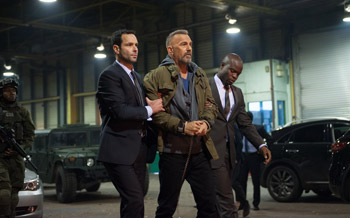 Though amnesia and memory loss have long been staples of the cinematic thriller, this story came at it in an opposite way. For Criminal is the story of a man gaining memories that both put him on a collision course with a terrorist and change the very foundations of who he believes he is.
Though amnesia and memory loss have long been staples of the cinematic thriller, this story came at it in an opposite way. For Criminal is the story of a man gaining memories that both put him on a collision course with a terrorist and change the very foundations of who he believes he is. Says Ariel Vromen: "Our main character, Jerico, is a person who starts with no feelings and no real emotions and then he goes on an incredible journey. He acquires all these memories from CIA agent Bill Pope's mind and he has to react to an entirely new view of life. Because of the massively high stakes, that core emotional story is surrounded by a plot that has great suspense and lots of action. That really appealed to me."
The mix of searing, high-octane action with the psychological intensity of a man trying to figure out if he is killer or savior was irresistible. "This is a big thriller. We have massive action sequences with cars, helicopter and the huge Airbus 400, along with intense fight scenes and excitement," Ariel Vromen points out. 'However, I believe today's audiences are also looking for something beyond thrilling explosions and car crashes. I felt the unique journey of Jerico's growth into a different person could be just as exciting as the non-stop action."
The futuristic, yet science-based, concepts that lie behind Criminal emerged from the minds of the screenwriting team of Douglas Cook and David Weisberg, who previously wrote the hit prison escape thriller The Rock, among others. Cook and Weisberg became intrigued by cutting-edge research in neurobiology, brain architecture and artificial intelligence which suggests that the processes that make up our innermost minds might soon be mappable – and consciousness itself might become transferable from one human mind to a machine or even another human being. Some people call it the development of Humanity 2.0.
"We are very interested in the work of futurist Ray Kurzweil," says David Weisberg, referring to the computer scientist and inventor who has become renown for his bold predictions about how coming scientific revolutions and artificial intelligence will change humanity forever.
'Kurzweil talks a lot about who and what we are as human beings," David Weisberg goes on. 'He has this concept that all we are is the summation of our memories. And those memories are nothing more than connections in the brain – so when find a way to fully map those connections it should be possible to reproduce them in another medium. That was part of our inspiration. But the medium we have chosen in this movie is not a computer. The medium is another human being, giving us the intriguing idea of -memory transfer.' This technology has almost arrived, and we believe it is close enough to actually be possible."
The writers embarked on intensive research, uncovering scientists who are exploring early stages of the surgery imposed on Jerico in Criminal. Already, scientists have accomplished gene transfers into animal brain neurons and started making comprehensive maps of an individual brain's neurons, gene expression states and electro-chemical signals, suggesting a brave new world of neurological manipulation lies on the horizon.
"We did a lot of research and, in the build up to production, Ariel also spent a lot of time talking to some scientists in Japan who are pursuing this very research. This is something that is remarkably close to happening one day in real life," David Weisberg notes.
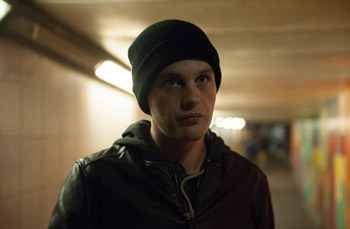 The science might be fresh and evolving, but the idea hooks into timeless themes that have been fascinating humankind for ages – from who we are if our memories are obliterated to the dream of bringing the dead back to life – and that set the team's imaginations reeling. They began to envision a character unlike any other, a criminal whose frontal lobes were so badly damaged they left him full of violent rage and devoid of feeling for others … until he suddenly gets his first chance at deep human emotions in the midst of an all-out run for his life.
The science might be fresh and evolving, but the idea hooks into timeless themes that have been fascinating humankind for ages – from who we are if our memories are obliterated to the dream of bringing the dead back to life – and that set the team's imaginations reeling. They began to envision a character unlike any other, a criminal whose frontal lobes were so badly damaged they left him full of violent rage and devoid of feeling for others … until he suddenly gets his first chance at deep human emotions in the midst of an all-out run for his life. 'It's a kind of modern -Frankenstein' concept," commented Douglas Cook. 'We were intrigued by the idea of what happens if you take a very damaged monster and actually start to humanise him through the effects of this memory transfer. What happens to a criminal when he starts having the feelings associated with a CIA agent's memories? For someone like Jerico, damaged at a young age … this is a revolution within him."
'For us the magic of this movie is allowing audiences to take a journey with this horrible man who uncovers a heart and a soul through the course of the story. One of the tragedies of Jerico is that before he had the memory transfer, he was oblivious. But now, he realizes what a monster he had been and he doesn't want to be that 'thing" any more… yet he is aware that the operation he had is not forever and the monster will return. As we wrote, we focused on delivering huge action but also on the transformation of this character."
When executive producer Avi Lerner, founder of Millennium Films, read the completed screenplay, he was riveted by the rocketing pace and suspense, by the story's rich array of spies, doctors, hackers and convicts - and especially by the mind-boggling implications for a future in which memories may no longer be private and personal possessions.
'Immediately we liked the concept of a real-life, scientifically-based transfer between good and evil," Avi Lerner says. 'And then you have all the elements of the espionage action. It's really a unique thriller and maybe even a little risky. Who could believe that very soon you will be able to take DNA in one brain and transfer it to another person? We can't say when it will happen but we know now that it is likely around the corner."
Avi Lerner was gratified to give Ariel Vromen a shot at his biggest, most star-studded production yet. "What I really like about Ariel is that he is very sensitive. This is an action-packed, fun movie but at the same time, he captures the emotions in every moment," says the executive producer Douglas Cook says, 'We've had a lot of fun working with Ariel in shaping the script because he was so keyed into the characters. As a director, he has an artist's temperament, which is compelling on an action movie. On the one hand he totally delivers on the action and it is a really fun ride. At the same time, he gets into the idea of how memory shapes us – and that is so unusual for this kind of picture." The excitement for David Weisberg and Douglas Cook mounted as the cast began to take shape. "Ariel brought together a fabulous cast," sums up David Weisberg. 'Kevin Costner has really embraced Jerico and takes this chance to show people a very new Kevin Costner; we were amazed by what he did."
Criminal, Spy, Doctor: The Main Cast
Leading the film's star-studded cast is award winning Kevin Costner in one of his most challenging and unusual roles. As Jerico, Kevin Costner had to inhabit two minds at once – that of a hard-bitten, unfeeling criminal capable of anything and that of a patriotic spy and family man driven to be a good man – and find the ways they fuse in one man's reeling mind.
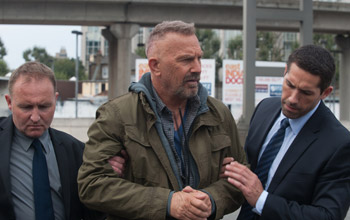 Kevin Costner says of his reaction to the script: 'I'm always attracted to projects when they are multi-layered and this story is very much that. Criminal is definitely an action movie but I responded most strongly to the complexity of my character, to all the confusion and turmoil that is scrambled up inside Jerico as he comes to terms with what he is experiencing."
Kevin Costner says of his reaction to the script: 'I'm always attracted to projects when they are multi-layered and this story is very much that. Criminal is definitely an action movie but I responded most strongly to the complexity of my character, to all the confusion and turmoil that is scrambled up inside Jerico as he comes to terms with what he is experiencing." He goes on: "When we meet Jerico, he is in prison and has spent most of his life there. An injury he suffered as a child rendered him a sociopath, so he has no understanding that the things he does are wrong. He just reacts, sometimes violently, sometimes humorously. He is so unpredictable that he is not even allowed near anyone in jail. But after his operation, Jerico starts going back and forth between who he was and who Bill Pope is. He's very mixed-up and suddenly he's comprehending things and having sensations that he's never experienced before on every level. And that's what I had to figure out how to portray."
Avi Lerner had the initial vision to put Kevin Costner in the intricate role. Says Avi Lerner: 'Kevin Costner is a true movie star and though Jerico is someone very damaged from his past, and is very scary, he also has to be a likeable, savvy guy as he takes on Bill Pope's memories. Kevin Costner knew it would be a challenge to merge these opposite characters but he is perfect for it."
Ariel Vromen says he couldn't have imagined a better choice. 'We're so used to Kevin Costner playing lovable, charming characters," says the director, 'I thought it would be exciting to break him down and then reintroduce the charm. The challenge was could Kevin Costner be that mean, angry, raw and violent – but Kevin Costner was amazing. The duality that he projects is intense and he was able to reach all the different emotional levels of Jerico's journey. No one will have ever seen Kevin Costner play a role like this before and that is a very exciting prospect for a director."
Kevin Costner gives equal credit to Ariel Vromen. 'Ariel was so certain I was right to play Jerico. I kept looking in the mirror, questioning why me? I'm Kevin Kevin Costner, I'm a cowboy, I play baseball," he admits. 'But not for Ariel Vromen. That determination made me respond to him that much more as a director. Ariel brings something to Criminal that another director would not. There is an -Ariel Vromen energy' that I'm sure will become his signature."
One of the most fascinating aspects of playing Jerico was figuring out his tricky relationship with Bill Pope's widow, Jill Pope, played by Israeli actress Gal Gadot [soon to be seen in Batman Vs Superman and next year's Wonder Woman], who unexpectedly lures Jerico and introduces him to feelings of love, loyalty and regret he's never encountered. Kevin Costner found an unusual rapport with her, with both characters deeply unnerved by one another yet drawn to each other.
"Gal Gadot is an actress I was not aware of before this movie and I had a great experience with her. Her character brings femininity to a movie that is hard and cold in parts," Kevin Costner comments. 'On day one, we were thrown into the really rough scene where my character starts to assault her. I walked onto the set with a shaved head and nasty four-inch scar and had to bind her with tape, but Gal Gadot was so prepared and so generous. I think at first she is scared and revolted by Jerico but her curiosity gets the better of her and they find a connection."
Gal Gadot was drawn to Jill's own transformation in the course of the story. "With Bill, Jill had settled for a convenient life, staying with a husband who she had trouble communicating with because it was comfortable. When her husband dies, Jill has no choice other than to fight for the truth," Gal Gadot observes.
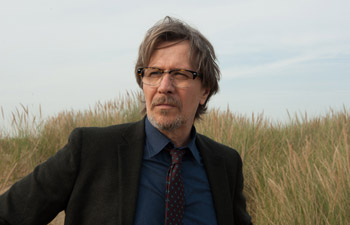 Her character has to span both fear and inexplicable attraction in her relationship with Jerico, a process Gal Gadot says Kevin Costner helped tremendously. "Kevin brings his own charm to the hardcore character of Jerico. He is an incredible actor and by the end of the film, he goes through an amazing transformation."
Her character has to span both fear and inexplicable attraction in her relationship with Jerico, a process Gal Gadot says Kevin Costner helped tremendously. "Kevin brings his own charm to the hardcore character of Jerico. He is an incredible actor and by the end of the film, he goes through an amazing transformation." Gal Gadot notes that part of the fun of her character is that she is in the dark about who Jerico is and what he wants, though the audience knows. "My character is suddenly confronted by a total stranger who knows every detail about her. She is mystified and the audience will be on the edge of their seats because there is so much going on at every level."
Kevin Costner also enjoyed the tense relationship his character has with Dr. Franks, the neurosurgeon who forcibly alters Jerico's brain – leaving him angry, in peril but also capable of love and hope for the first time. "It's interesting to see Tommy take on a very different type of role in this movie. Dr. Franks has worked his whole life towards this moment when he can perform his groundbreaking brain surgery. He's a highly intelligent man who sees his dream being kicked around and ultimately threatened, so he needs to be very measured in the way he reacts and deals with Jerico," Kevin Costner observes.
The one man who sees Jerico entirely as a tool to get what he desperately needs is the London-based CIA chief, Quaker Wells, portrayed by Gary Oldman, who garnered an Academy Award® nomination playing legendary fictional spy George Smiley in Tinker Tailor Soldier Spy.
Gary Oldman introduces his character: "Quaker is one of those people who chases bad guys and is very good at his job, but he's become more and more cynical. He spends a great deal of his time chasing people and he is now chasing the computer genius known as The Dutchman, who has tapped into the U.S. Central Command and Control. The key to finding The Dutchman turns out to be Jerico; but the frustrating thing is that Quaker is always one step behind Jerico."
Oldman was especially pleased to reunite with Costner – having starred with him and Tommy Lee Jones in Oliver Stone's award-winning JFK previously – and to join forces with director Vromen for the first time. "I love Kevin Costner both as an actor and as a director," says Gary Oldman. 'This role is unlike anything Kevin Costner has played before and he certainly looks unlike we have ever seen him. It has been 20 years since Kevin Costner, Tommy Lee Jones and myself worked together on JFK, and now we are reunited on Criminal so it is quite thrilling."
He continues: 'I thought Ariel's The Iceman was a terrific picture. He is smart, young, and he infuses the set with a great atmosphere."
As Dr. Frank, Tommy Lee Jones also tackles a character quite different from any he has played in his long career, which includes 4 Oscar® nominations including a Best Actor win for The Fugitive. Often cast as tough, salt-of-the-earth men, Jones here plays a scientist caught up in the quest for a medical breakthrough without foreseeing the full consequences.
'We were trying to break the norm in terms of casting," explains Ariel Vromen. "We get so used to seeing the same heroes in the same hero roles, it can become suffocating. Having Tommy Lee Jones play a vulnerable man is a fresh approach. Likewise, seeing a professional, scheming, energetic Gary Oldman is unusual. These are all extremely talented actors and I love that their characters are the opposite of what the audience will be expecting."
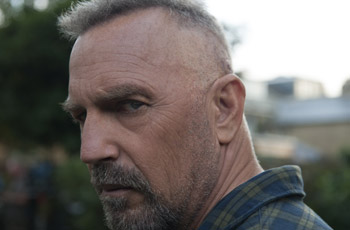 Jones says of his character, "Dr. Franks is a more passive character and I did enjoy playing this role. It's an unusual part for me."
Jones says of his character, "Dr. Franks is a more passive character and I did enjoy playing this role. It's an unusual part for me." He especially enjoyed collaborating with Costner as his patient and adversary Jerico. "Kevin Costner is really playing two characters and, from my perspective, he's done a very good job," says Tommy Lee Jones. 'The story of a putting one person's brain in another person's body is an old narrative structure. But Kevin has an original approach. It really looks brand new when it is in his hands."
Supporting Cast
Surrounding Costner, Reynolds, Oldman and Jones is a crack supporting cast of characters. Jordi Molla (Riddick) takes the role of power hungry tyrant, Heimdahl, who is after The Dutchman's ability to control the most powerful weaponry on earth to fulfill his own hunger to disrupt civilization. Molla remembers his first impressions of the script: "When my character appeared, I had a feeling he would be killed by page 10. I was so surprised when he kept going until the end! It's filled with interesting ideas including implanting memories into someone else's brain. Also, I really liked that the movie talks about the system, how the world works and the power structure. All that stuff appealed to me." Molla felt confident in Ariel Vromen's approach. "He gave the actors a lot of freedom. For example, a point of reference for me was the writer Eckhart Tolle. I really wanted to bring some of his ideology to Heimdahl. He became my point of reference – and Ariel liked the idea but he also controlled what I was doing."
Perhaps the greatest attraction for Molla was taking the coveted villain role, especially one who is not so black-and-white. 'Audiences always love the bad guy – and as an actor, you are allowed to do things you are not allowed to do in reality, to explore your dark side," he observes. 'Heimdahl is a pretty sophisticated villain; his strength is in how he sees the world because he wants to change it. He is a millionaire with a vision, so he is like a messiah. I have to say, I agree with many things Heimdahl says about governments, religion, banks, and about the brainwashing of corporations. He has some good points."
And then there were his castmates. 'When you have Tommy Lee Jones and Kevin Costner on the set, you learn every day and it is just a gift," he concludes.
The man who sets the events of Criminal in motion is Jan Strook, the hacker also known as The Dutchman, who has found an elusive back door into the U.S. nuclear arsenal. Taking the role is Michael Pitt ('Boardwalk Empire," Seven Psychopaths).
Pitt describes his character as the kind of person "who probably hacked into NASA when he was 14 and then started working for various people. He's managed to break into the Emergency Command and Control system of the United States – but now he's trying to hand that power over and the Americans are supposed to be hiding him."
While Michael Pitt admits his computer savvy extends only so far as music and editing software, he realises the profound power hacking can bring to those who are talented at it. 'The Dutchman's skills allow him to navigate the Dark Web, the part of the web used by terrorists and criminals," explains Michael Pitt.
'He's found a place where he can control the world's nuclear weapons, but now he is in fear for his life. He is also in fear for the world. If this technology gets in the wrong hands, anyone could send nuclear weapons to any place in the world."
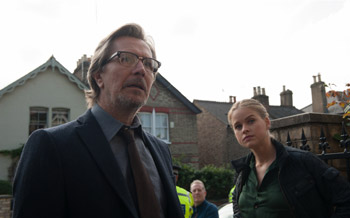 He winds up pursued by the relentless and destructive Heimdahl. "Heimdahl is crazy, completely nuts, an anarchist and that is why he wants this technology. Eventually, The Dutchman does a deal with the Russians purely because he doesn't feel he has anywhere else to go. However, the Dutchman has got a conscience to a certain degree. He knows that to let Heimdahl have this technology would be crazy. It would be end of the world as we know it."
He winds up pursued by the relentless and destructive Heimdahl. "Heimdahl is crazy, completely nuts, an anarchist and that is why he wants this technology. Eventually, The Dutchman does a deal with the Russians purely because he doesn't feel he has anywhere else to go. However, the Dutchman has got a conscience to a certain degree. He knows that to let Heimdahl have this technology would be crazy. It would be end of the world as we know it." Heimdahl's partner is Elsa Mueller, played by Antje Traue, the German actress known for her role as the villain of Man of Steel. She says that Ariel Vromen won her over. "In our first conversation, I was really struck by the way Ariel spoke about Elsa; he left me feeling we could do something really interesting with the character," she recalls. 'His process is fluid and he is both spontaneous and decisive on set. What I have been most impressed by is his ability to embrace the action, keeping up the pace with a huge amount of energy, then slowing things down for the drama. He loves actors and he allows you to take your time to get it right."
As for Elsa, Antje Traue says: 'Elsa has taken a dark path. She was raised in challenging circumstances which drives her and she lives an alternative lifestyle. I think she has developed a very high tolerance for pain. There is an attraction to powerful men and that is what makes her follow Heimdahl. Elsa is good with weapons and has a very strong physicality. She is a strong women who knows how to protect herself and those close to her."
Antje Traue relishes the role of the bad girl. "It's a safe place to get your venom out and do all the things you are not supposed to in society," she comments. 'Before I started this project, I played a very soft and introverted character. Elsa is the total opposite, which is liberating."
The costumes of designer Jill Taylor helped further define the character, Traue says. "Costume fittings can be frustrating but with Jill it was different. The inspiration was Faye Dunaway in Eyes of Laura Mars - elegant yet lethal. Jill created a look that isn't stereotypical, with flowing, soft, feminine fabrics. Then she changes into her combat clothes and amazing leather jacket. The costumes are a fun part of Elsa's journey."
British actress Alice Eve (Star Trek Into Darkness) takes the role of CIA Operative Marta Lynch. She started her preparation with research into the lonely lives of CIA agents. "It is an incredibly private and isolated existence," Alice Eve observes. You can't tell your family, friends or your lover what you have been doing. It's interesting to imagine what that does to you psychologically. It is probably quite harrowing, and I think the bond that is created through working together under those secretive circumstances is very intense."
The bond between the actors on set was also very close, Eve notes. She especially enjoyed working with Gary Oldman who plays her boss. "Gary Oldman is such a dedicated and immersive actor. I very much like working with that kind of commitment because one can grow with the experience, which is really what it is all about."
Playing Special Agent Esteban Ruiza is rising star Amaury Nolasco, known for his roles on television's 'Prison Break" and 'Telenovela" and in Michael Bay's Transformers series. Nolasco was gratified to have the rare chance to work with simultaneously with Kevin Costner, Gary Oldman and Tommy Lee Jones. 'Working with these three Academy Award®-winning and nominated actors was like going back to school," he muses. 'All I did was watch and learn. Seeing their process, watching how they approached every scene and listening to their anecdotes in between takes was all priceless. Don't tell anyone, but I would have taken this role for free just to get the opportunity to work with these three giants."
Most of all, Nolasco, whose character tracks Jerico through London, was moved by his story. 'I found it intriguing the way Jerico gets another chance at life. This is a guy who was dealt bad cards. It was not a choice. Life was just unfair to him. But now he gets to see and live a different life. It may not be his, but it sure is better then the one he had," he concludes. 'It is filled with emotions, feelings, and the ability to care and love. When he screams to Quaker Wells -they matter to me' about Jill and Emma Pope, you see who he has become."
Criminal World
As Jerico enters a secretive world of international spies, ingenious hackers and powerful tyrants, he roams a London he's never known but mysteriously can navigate. To capture this world, Ariel Vromen worked closely with director of photography Dana Gonzales (an Emmy® nominee for television's 'Fargo"), production designer Jon Henson (Testament of Youth, Boy A) and costume designer Jill Taylor (Match Point, Jack Ryan: Shadow Recruit) to hone in on all the details.
Vromen had a very clear vision of Criminal's London – one that veers off the beaten path. "I wanted to bring the city into the film in a way that it hasn't been seen before and film in places that even people from London never knew existed," the director explains. 'I wanted it really gritty, raw and definitely less clean, so we avoided Knightsbridge and Kensington. We sought out lesser known areas and found incredibly striking locations."
Ariel Vromen had a very clear vision of Criminal's London – one that veers off the beaten path. "I wanted to bring the city into the film in a way that it hasn't been seen before and film in places that even people from London never knew existed," the director explains. 'I wanted it really gritty, raw and definitely less clean, so we avoided Knightsbridge and Kensington. We sought out lesser known areas and found incredibly striking locations."
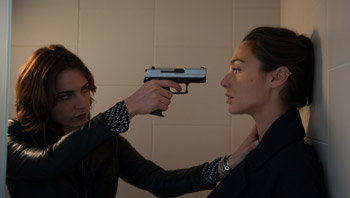 He was especially excited to collaborate with Gonzales on the fast-moving production. "Dana immediately understood what I wanted. Not only did Dana get my vision but he created sets that could be lit quickly and in a way that I could shoot over 60 set-ups a day. You can only do that when your DP has really planned his dramatic lighting meticulously. He takes his job very seriously and he gets incredible results."
He was especially excited to collaborate with Gonzales on the fast-moving production. "Dana immediately understood what I wanted. Not only did Dana get my vision but he created sets that could be lit quickly and in a way that I could shoot over 60 set-ups a day. You can only do that when your DP has really planned his dramatic lighting meticulously. He takes his job very seriously and he gets incredible results." Some of the action sequences were so complex in their choreography and crane-work that they took both hundreds of crew and hundreds of extras to pull them off. One of Ariel Vromen's favorite sequences is when Jerico wanders through Central London's famed Borough Market, experiencing his first taste of freedom in years. 'These moments weren't scripted because we wanted to see Jerico spontaneously thriving on his senses in an organic way," Ariel Vromen explains. 'He's seeing everything in a new way, the sights and smells are associated with memories he doesn't recognise – and that's a very cool moment."
Meanwhile Henson was working with a vast array of practical London locations. His process was unusual because of the sci-fi aspects of the film. 'In the early stages we put a lot of time into researching memory transfers, talking to many experts in the field," Henson recalls. 'We had meetings with brain surgeons, neurologists and scientists studying memory."
Creating the covert operating room where Jerico is involuntarily implanted with Pope's memories was key. 'This was for me the most difficult area of the film to get right," says Henson. 'Each stage of the operation had to be carefully researched and planned. We really wanted to inject – no pun intended! – as much realism as possible. All of the operating equipment had to be made to fit Kevin Costner comfortably; so we actually took 3D scans of Kevin Costner's head and even 3D-printed a scale version of his skull in plastic. This was then used as a template for us to build the head braces and insertion tools. We had a brain surgeon advising us on set, as well as a neurosurgical nurse working with the set dressers and the actors."
Henson also notes that the off-the-grid operating room is, by necessity, not in a hospital but in a secret warehouse location – which meant embarking on research into the creation of impromptu, sterile 'clean rooms." 'We found out that the military has these portable enclosures that allow them to perform operations in the field in very un-hygienic environments," Henson explains. 'They are generally made from see through clear plastic so it works brilliantly on film."
After scouring London, he found the perfect locale for the operating room: Harmsworth Quay's abandoned print works, now a ghostly industrial space. 'We built a portable clean room to match military specs and placed it into the middle of this grungy old print works," he muses. 'It works visually very well, because you have this very intriguing mix of a sterile operating room and dirty surroundings."
Other sequences were equally influenced by London. 'We really wanted to try things in the city that had not been done before," says Henson. 'For example we came across Connaught Bridge, this great East End drawbridge that opens like a gate to allow boats through. It had never been filmed before which excited us – so we came up with the idea of a gunfight on the bridge, ending in a car driving righter into the river. It required very detailed planning and permissions. We built scale models of the bridge and had many logistical meetings. But it's one of the best action sequences in the film in my opinion and it resulted in some really atmospheric underwater work that wouldn't have existed otherwise."
Locations in the film span a wide range, including: Millennium Mill at Royal Victoria Dock, where the opening shoot-out between Bill Pope and Heimdahl's men unfolds; a house in leafy Kingston Upon Thames – once the property of the King in Saxon times – as the home of Bill and Jill Pope, where Jerico is driven by memories; privately-owned Blackbushe Airport, where Heimdahl holds young Emma Pope at gun-point; Croydon College, which provided the hideout where Bill Pope stashes The Dutchman, the medical research lab and the CIA interrogation unit where Quaker Wells questions Jerico; the SOAS Library, one of the world's most important academic libraries for the study of Africa, Asia and the Middle East, where Jerico searches for a mysterious duffel bag; and RAF St. Athan Airport in Cardiff doubling for Dover Air Force Base, where the production utilized the100-ton Airbus A400 transport aircraft along with numerous C130 Hercules transport aircraft.
Stages at the world-renowned Pinewood Studios were used for Bill Pope's basement, scenes inside a submarine U-boat, and one of Henson's favorite sets of all: Jerico's prison cell. 'It was hard to make the prison cell work, as Jerico had to be chained to the ceiling with a neck brace," says the designer. 'Kevin Costner wanted to be able to swing around the room on this chain, but prison cells tend to be cramped environments. We decided he would be housed in a special high-security unit. We built the ceilings very low, which helped with the feeling of claustrophobia. We added a small window in the center of the ceiling, which gave us an interesting light sauce. And we also based the colorations and ironwork on existing US prison environments that I think all of that combined gives it some realism," says the designer.
Bringing the story full circle, the emotional final scene of the film was shot at Camber Sands on the Kent Coast where the dramatic sand dunes and pristine beach mirror Jerico's haunting experiences. Sums up Henson: 'I think Ariel Vromen managed to find a really good balance between action and emotional drama throughout the film. He always wanted it to be a human story, as did I."
Says Kevin Costner of the film's look: 'The film takes place in such a unique city. London is so visually exciting, you can't cross a bridge without having your breath taken away morning, noon or night. And it works for this story."
It works, says Ariel Vromen, but ultimately all the exterior grit and visual surprises become secondary to the explosive realisations happening inside Jerico. He concludes: 'We have a lot of exciting beats in the film, but I think the real connection for the audience is this man who is learning to be human for the first time."
Criminal
Release Date: May 19th, 2016
Have You Seen This?
MORE
- Mission: Impossible Fallout
- Glenn Close The Wife
- Allison Chhorn Stanley's Mouth Interview
- Benicio Del Toro Sicario: Day of the Soldado
- Dame Judi Dench Tea With The Dames
- Sandra Bullock Ocean's 8
- Chris Pratt Jurassic World: Fallen Kingdom
- Claudia Sangiorgi Dalimore and Michelle Grace...
- Rachel McAdams Disobedience Interview
- Sebastián Lelio and Alessandro Nivola...
- Perri Cummings Trench Interview



